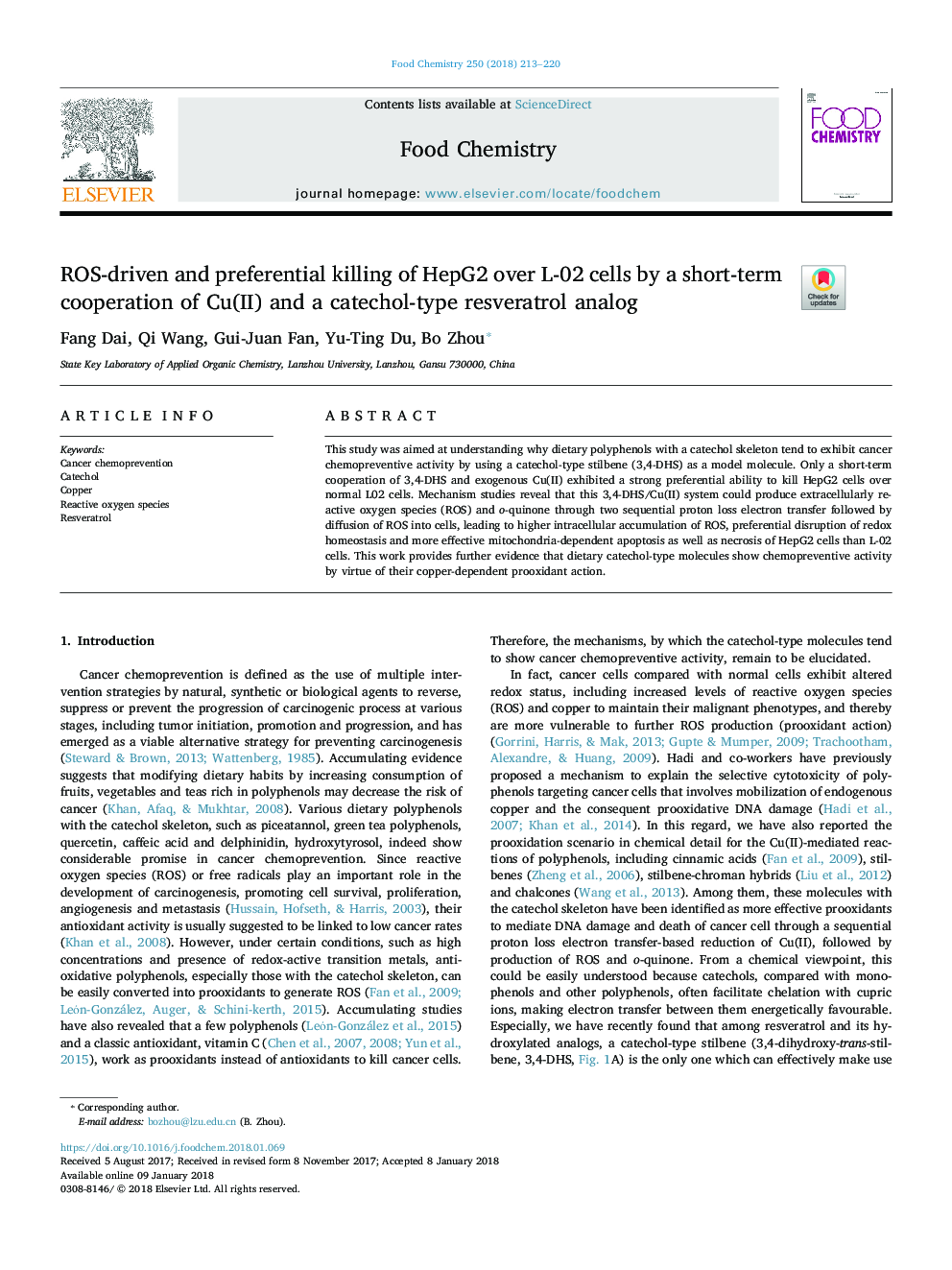| Article ID | Journal | Published Year | Pages | File Type |
|---|---|---|---|---|
| 7585792 | Food Chemistry | 2018 | 8 Pages |
Abstract
This study was aimed at understanding why dietary polyphenols with a catechol skeleton tend to exhibit cancer chemopreventive activity by using a catechol-type stilbene (3,4-DHS) as a model molecule. Only a short-term cooperation of 3,4-DHS and exogenous Cu(II) exhibited a strong preferential ability to kill HepG2 cells over normal L02 cells. Mechanism studies reveal that this 3,4-DHS/Cu(II) system could produce extracellularly reactive oxygen species (ROS) and o-quinone through two sequential proton loss electron transfer followed by diffusion of ROS into cells, leading to higher intracellular accumulation of ROS, preferential disruption of redox homeostasis and more effective mitochondria-dependent apoptosis as well as necrosis of HepG2 cells than L-02 cells. This work provides further evidence that dietary catechol-type molecules show chemopreventive activity by virtue of their copper-dependent prooxidant action.
Related Topics
Physical Sciences and Engineering
Chemistry
Analytical Chemistry
Authors
Fang Dai, Qi Wang, Gui-Juan Fan, Yu-Ting Du, Bo Zhou,
